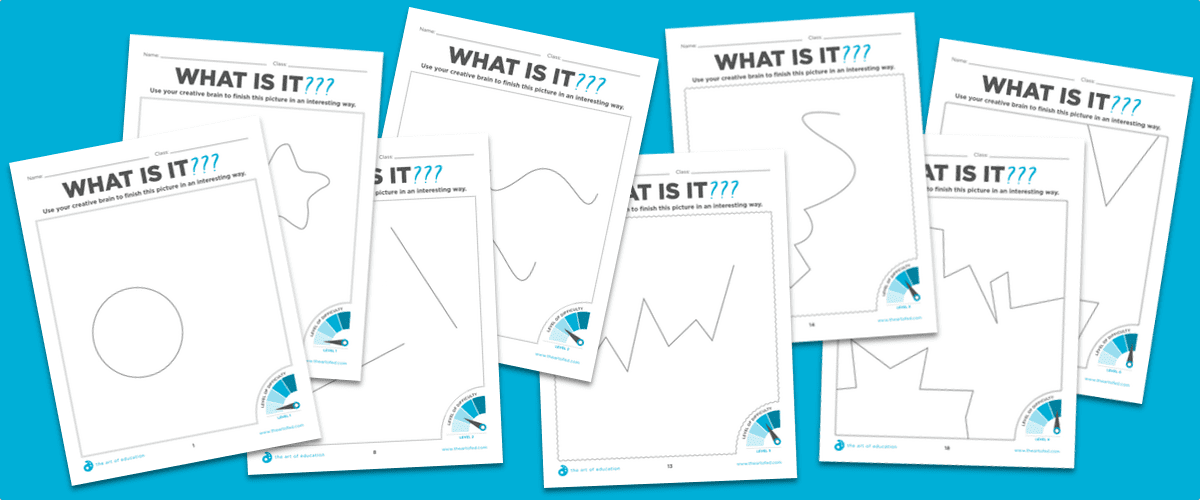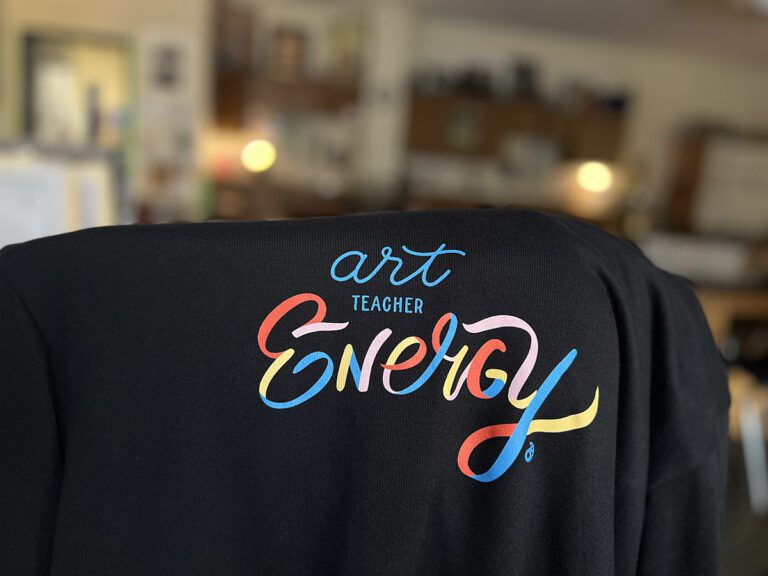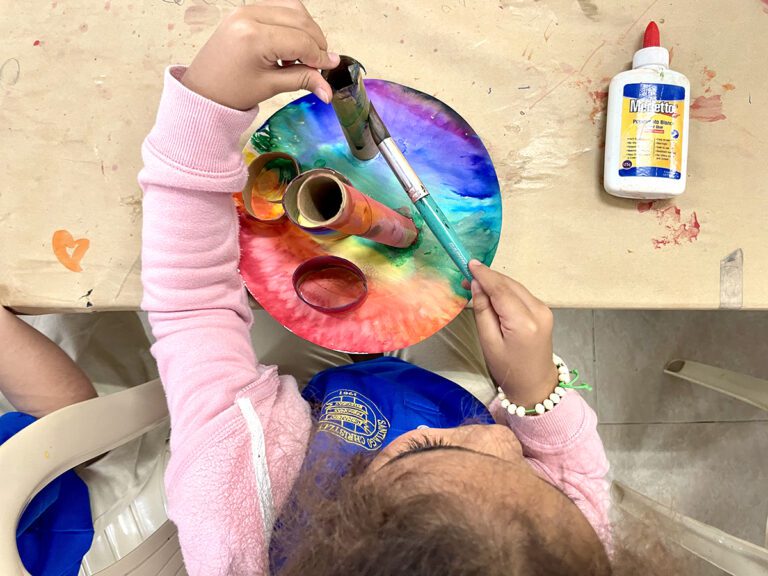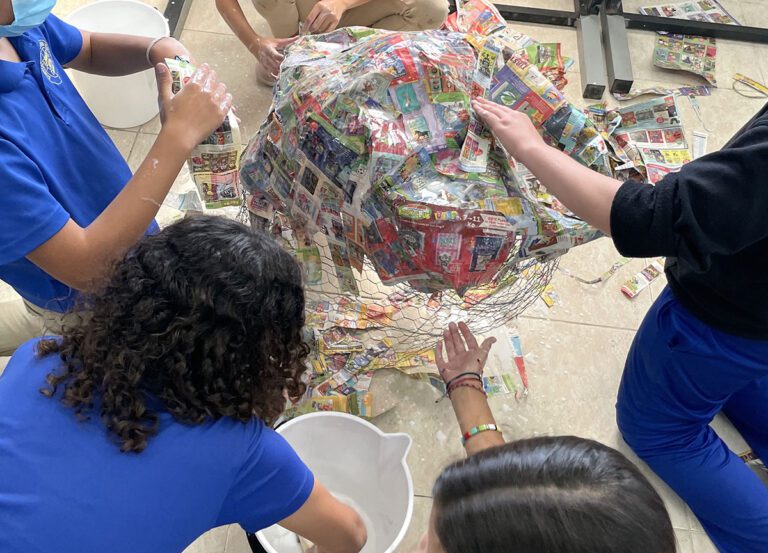In traditional art classrooms, students produce work at a variety of paces. Sometimes this can leave an art teacher scrambling to find meaningful activities for their students who finish early. We’ve already talked about how to set up an effective early finisher station, but what specific activities should you actually include?
Here are 34 Inspirational Ideas
1. Challenge your students to create their own board games.
Last year I found a huge ream of old, yellowing paper headed to the dumpster. It was pre-printed with 1-inch by 1-inch squares. I brought it to the art room and forgot about it until a second grader asked if he could use it to make his own version of Candy Land. This started a game board making craze in the art room. The imaginative drawing students produced with a self-chosen theme was amazing!
2. Designate a “Picture Book of the Day.”
Although you probably maintained a classroom library all year long, kids thrive on novelty. Select a book from your library to be the “Picture Book of the Day,” and feature it as an early finisher activity. Scarcity and novelty will make this book a commodity in your classroom. Plan ahead and relate it to the current lesson to add to their art knowledge.
3. Set up a sensory station.
Tap into the sensory needs that provoked the slime and fidget spinner crazes last school year by opening a sensory station. A sand or rice table can give younger students a tactile outlet that acts as a gateway to other art materials.
4. Provide a slew of “Finish the Picture” prompts.
Let your kids’ imaginations soar with these exciting “Finish the Picture” prompts. Print this 20-page download, make copies, and let your students get creative! To make things extra easy, the sheets are numbered and categorized by difficulty, so you can keep track of which ones you want to set out.
5. Post “want ads” for cleaning jobs.
Consider maintaining a list of simple cleaning and organizing activities students can engage in. Maintaining a working studio and learning to care for art supplies are worthy lessons all makers should have the chance to learn!
6. Teach your students to create an exquisite corpse drawing.
This surrealist party game can be easily implemented in the art room. Demonstrate how to fold the paper to keep a portion of the image “a secret” and let your artists collaborate to create some humorous and creative outcomes! If you’ve never played before, the Art Institute of Chicago Department of Museum Education has a great PDF with directions for both the written and drawn versions of the game available here.
7. Start an Artist Trading Card project in your school.
Artist Trading Cards have become a favorite creative pastime all over the world. Why not organize a card production and trading system for students who finish early?
If you love these ideas, be sure to check out the PRO Learning Pack Methods for Early Finishers for even more in-depth information! You’ll learn how to set up an effective early finisher station, the types of activities that work best, and so much more. It’s everything you need to implement early finisher strategies right away!
8. Help your students take their origami skills to the next level.
Kids love folding paper airplanes and fortune tellers, so help them elevate this art form! Connect them with online tutorials, this helpful Art of Education article, or YouTube videos that demonstrate basic origami and watch them produce masterpieces. Pre-cut some copy paper into squares to give them a head start. Or, if your budget allows, purchase the real thing!
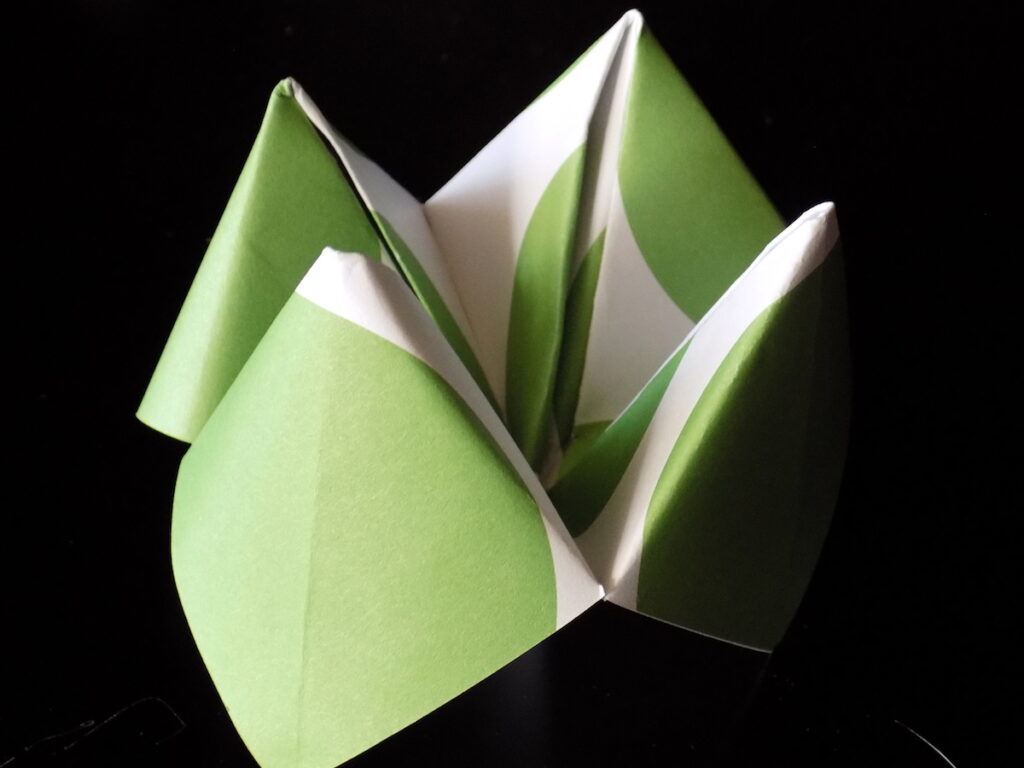
9. Enlist students to help make a Word Wall beautiful.
If you maintain a classroom “Word Wall” of art vocabulary, ask your students to illustrate that wall. Provide small papers (4″ x 4,” or whatever size works with your existing setup) and encourage them to make a visual representation of each word. After all, “a picture is worth a thousand words.” Even better, give them their first graphic design experience with a client, by offering to produce Word Wall illustrations for another teacher in your building.
10. Allow your students some tech time.
Create a quick list of art websites and web-based games for students to explore. Allow your students to peruse the list, web quest style, on a classroom computer or tablet. The list could be comprised of your current favorites, or it could relate to a classroom theme or area of study.
Here are my students’ top three websites:
11. Be thoughtful about providing coloring pages.
Many older students have turned to the adult coloring book fad as a creative outlet. Offer parameters that reinforce technical skills. For example, challenge students to color an entire page with just two colored pencils, forcing them to development different values. Or, ask kids to create their own coloring pages for the class using black felt-tip pens and white copy paper.
12. Encourage your students’ sketchbook practice.
Provide your students with sketchbooks. If you are on a budget, they can just make them by stapling together copy paper. Then, explore the different drawing prompts and challenges that the internet has to offer. Here are two available on AOE.
13. Help hone observational drawing skills with symmetrical portraits.
Help kids with their observational drawing skills by giving them half of an image and asking them to complete the other side with drawing pencils. Provide portraits of famous people, or take photos of willing staff members.
14. Get out basic building blocks.
Building with blocks can offer important conceptual practice students can use when working with other 3D materials. Purchase a few different kinds for your classroom or scavenge free wood scraps from your district’s Industrial Arts program and create your own. Pro Tip: Foam blocks are a nice option when you want to keep things quiet!
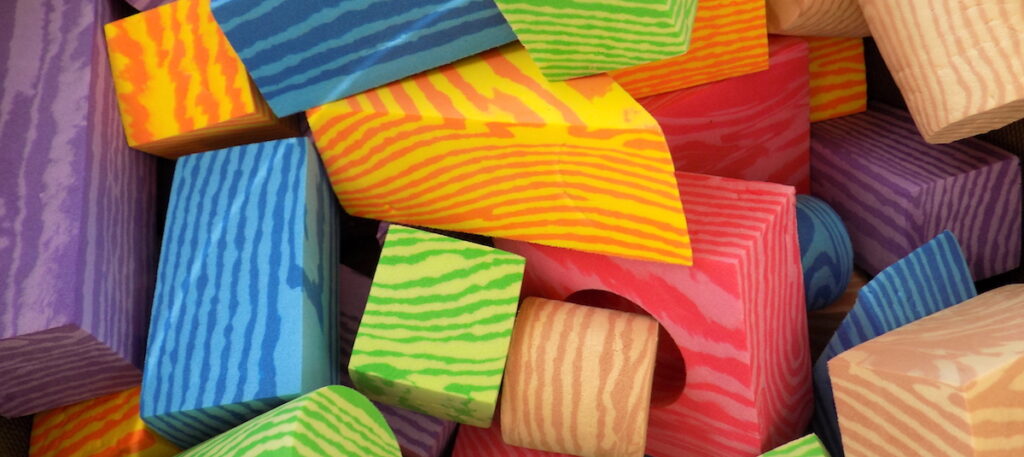
15. Have older students create teaching tools for younger students.
Ask kids to recall a favorite project from your curriculum. Ask them to create step-by-step examples of that project (or the associated technique) for younger students. Provide them with a large piece of construction paper, poster board, or butcher paper to use as a project board to display the instructional aids they create.
16. Let students create work for real world clients.
Are you being asked to produce posters or other art products for your PTO/PTA? Why not give the students the ownership over their own school environment and let THEM help with these tasks. The outcome may not be exactly as you intended, but the sense of school community the students will gain is priceless. Provide them with the PTO’s vision and some basic parameters, then let them create! (*Be sure to explain your philosophy to the PTO in advance, so they know that they will be receiving a “kid created product” when they task you with a project).
17. Turn your students into comic book artists.
Create a comic strip template and ask students to produce comics to fulfill a prompt, or leave it open-ended to let them explore their own topics. Hang funny or inventive student examples on the board for the class to enjoy.
18. Build the classroom drawing library.
Instead of using “How to Draw Books,” have your students create their own library of ideas. Provide them with paper and binders to organize their creations by theme. Check out this AOEU article for more information.
19. Teach students to play Dice Roll Drawing games.
If you aren’t familiar with this exciting and random drawing game, it’s simple! Kids roll dice to randomly select different elements that will produce final drawings. These games are available online for a huge variety of themes, ranging from art history to specific holidays. There are many available on Teachers Pay Teachers. In addition, the website How to Draw Step-by-Step Drawing Tutorials has a great set of kid-friendly directions and a printable die to get you started. Even better, create a blank template and have the kids create their own for each other!
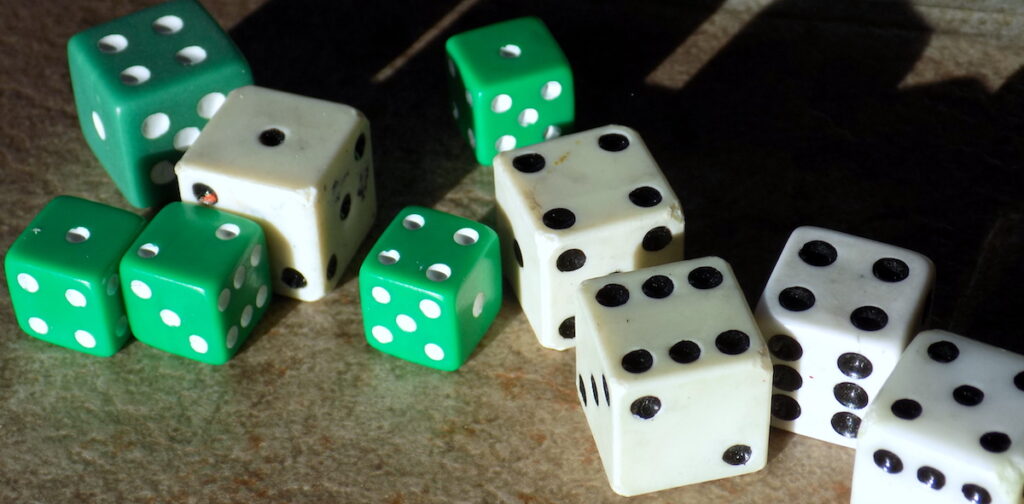
20. Explore perspective in a fun way.
Pinterest is full of optical illusion photographic ideas. Choose a few examples and allow your student to practice, then produce their own! Here’s another resource from AOEU: Forced Perspective Photos: Free Lesson Plan Download
21. Help your students hone their weaving skills over time.
Weaving can be a time-consuming task, so why not use it as an early finisher activity? Introduce and practice the skills as a class, getting students started on the project. Then, pause the process and explain it will be an ongoing activity all year long. Students can return to the project time and time again throughout the year. Over time, they will develop a larger project, using those spare minutes of instructional time. You could also consider setting up a large loom students can work on collaboratively.
22. Encourage collaboration.
Use a section of free wall space to hang large butcher block paper for a collaborative group drawing mural. Set some basic parameters, such as appropriate imagery, theme, and materials. (I’d recommend flair pens because of their fine tips and variety of colors). Let students slowly add to the larger mural over time, developing a collective artwork.
23. Challenge students with a color mixing task.
Check out this AOEU article about an inventive color mixing game then set something similar up for your students. Provide paint swatches or magazine clippings students must color match using colored pencil blending techniques.
24. Try out a new toy.
If you have a high tolerance for happy shrieking, this activity is worth a try in your classroom. This product, called The Doodle-Track Car, is typically available at Walmart and Amazon. (Currently, they are sold out… try the Indianapolis Children’s Museum instead.) The car operates using a sensor in the bottom, which reacts to high contrast color change. The set comes with a marker but works with other black markers as well.
I like to give the kids a large sheet of white paper, a box of markers, and the instructions that the car operates off contrast. Through experimentation, they discover that the car will follow a continuous black line on a white piece of paper. Warning: Expect all project-related work to cease when your early finishers start this activity; it is a show stopper.
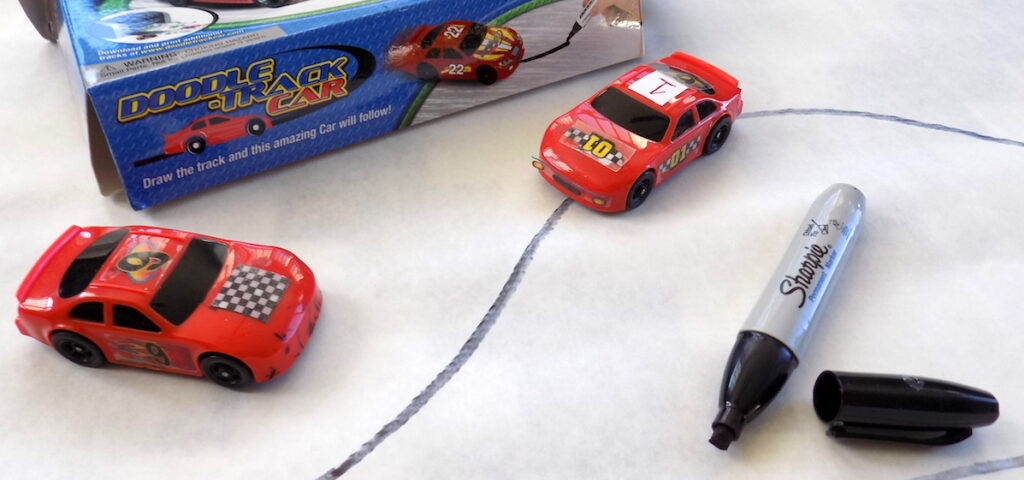
25. Contact contemporary artists.
Maintain a list of contemporary artists who might be interesting to your students. Allow students to do a little internet research and write a letter to an artist who inspires them. Encourage them to share some of their own work with that artist. Who knows, they may get a response!
26. Develop creative thinking with “Brainstorming Boggle.”
Help kids sharpen their idea-generating skills by giving them a brainstorming prompt. Assign them a partner, but have them brainstorm on a scrap paper, individually. The prompt could be anything: potential portraits, places for a landscape, objects in a still life, etc. Have the kids compare their results. Just like in Boggle, any common answers are eliminated. Anything unique gets one point. Kids can tally their scores to determine a winner. The real winner is everyone, of course, because they are learning to develop unique answers!
27. Work on persistence with flip books.
Invest in some post it notes or provide pre-cut paper scraps and a stapler. Challenge your student to develop their sequential art skills and persistence by producing some old school flip books.
28. Enlist students to help take classroom photos.
As a teacher, you take classroom photographs for a wide variety of reasons: your website, classroom newsletter, Artsonia, the school yearbook, etc. Why not provide your early finishers with the opportunity to take a leadership role by taking these photos for you? Create a quick “cheat sheet” of basic photography tips and turn the camera over to them!
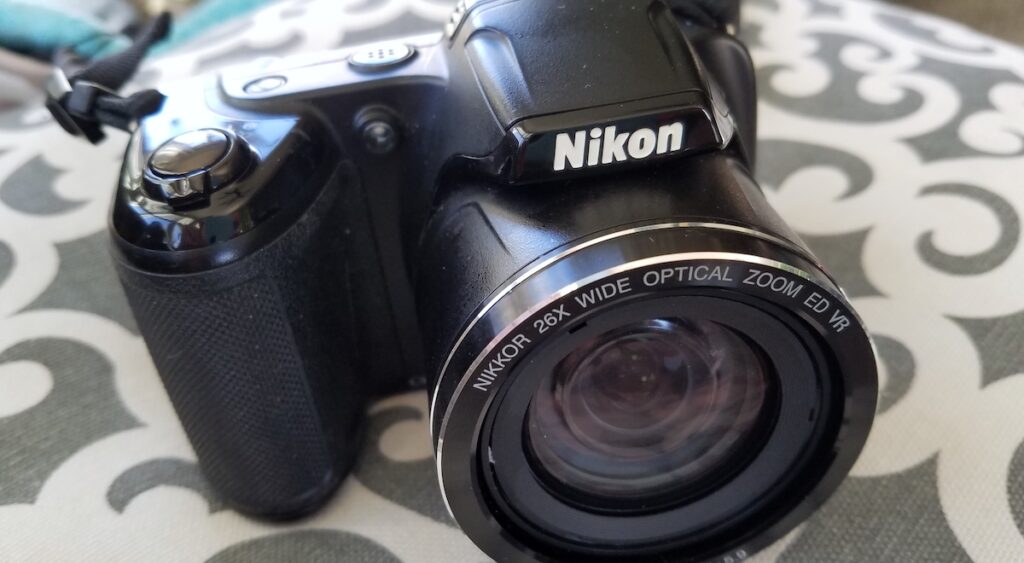
29. Let your students test new supplies and provide reviews.
As you get free samples from companies through the mail or at art conferences, ask early finishers to test them out and write reviews for you! Choosing appropriate supplies for a project is an essential artistic skill, so let them help you ascertain whether something is worthy of purchasing for your art room.
30. Create art history puzzles.
Encourage recognition of famous paintings by cutting old posters or calendar images into puzzle pieces. My students love to time themselves as they race to complete the image.
31. Publish your students’ work to your classroom library.
Kids love making books. Encourage students to work solo or team up with a partner to create a new addition for your classroom library. Keep a stash of cut construction paper “pages” for writing and illustrating. Depending on the age of your students and the time you have, you can simply staple the pages together or do a quick demo of some other bookmaking finishing techniques.
32. Help students practice their hand-building skills with play dough.
Provide students with play dough and task them with practicing those foundational ceramic hand-building skills such as coil rolling, creating a pinch pot, or forming a slab. They will gain experience and your classroom will smell great!
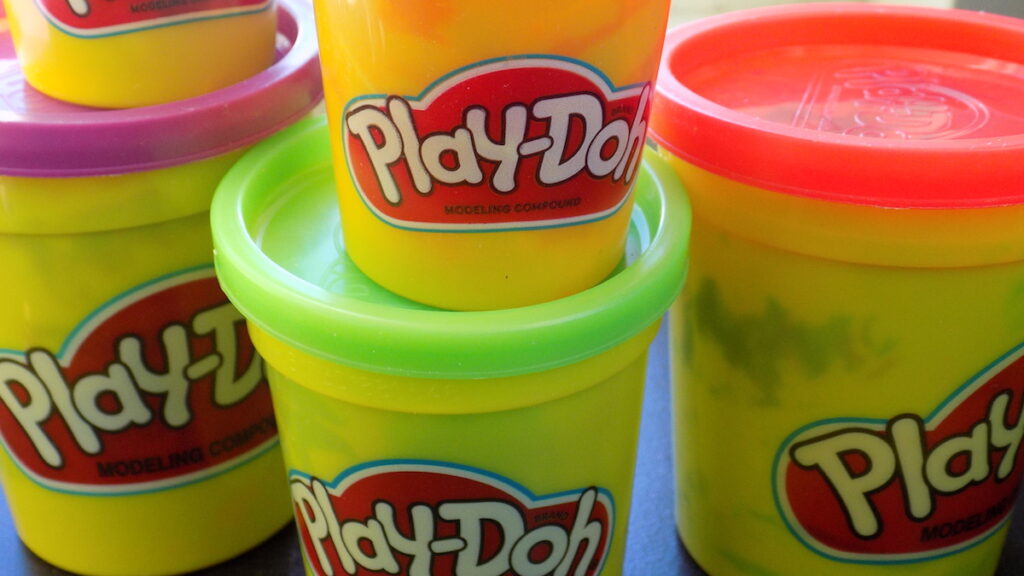
33. Create a “Guess Who, Artist Edition” for your students to play.
As seen on Pinterest, go to your local thrift store and purchase old “Guess Who” game boards. Remove the standard playing pieces and replace them with art history images. Students will have to use their art vocabulary to play the game! Creative people are making tons of different versions of this game. Check out:
34. Encourage students to enter local poster or design contests.
As art teachers, we get dozens of local and regional drawing contest invitations a year. Most of these do not fit in our curriculum and thus hit the trash can. Instead, keep them all in a folder and let your early finishers select contests of interest. Competitive kids love entering for some artist recognition!
With a list this large, you are bound to find several strategies that will work for the early finishers in your classroom.
What strategies/resources would you add to the list?
What is the most popular early finisher activity in your classroom?
Magazine articles and podcasts are opinions of professional education contributors and do not necessarily represent the position of the Art of Education University (AOEU) or its academic offerings. Contributors use terms in the way they are most often talked about in the scope of their educational experiences.
